Preamble:
What does a wine glass look like when it’s shot? (TL;DR have a look at my flickr album)
This obvious question was asked when my wife provided me with three wine glasses which were used to keep her Siamese Fighting Fish. She couldn’t bring herself to drink from them after their use as aquariums. So I decided to destroy them and make a few attempts at high-speed photography!
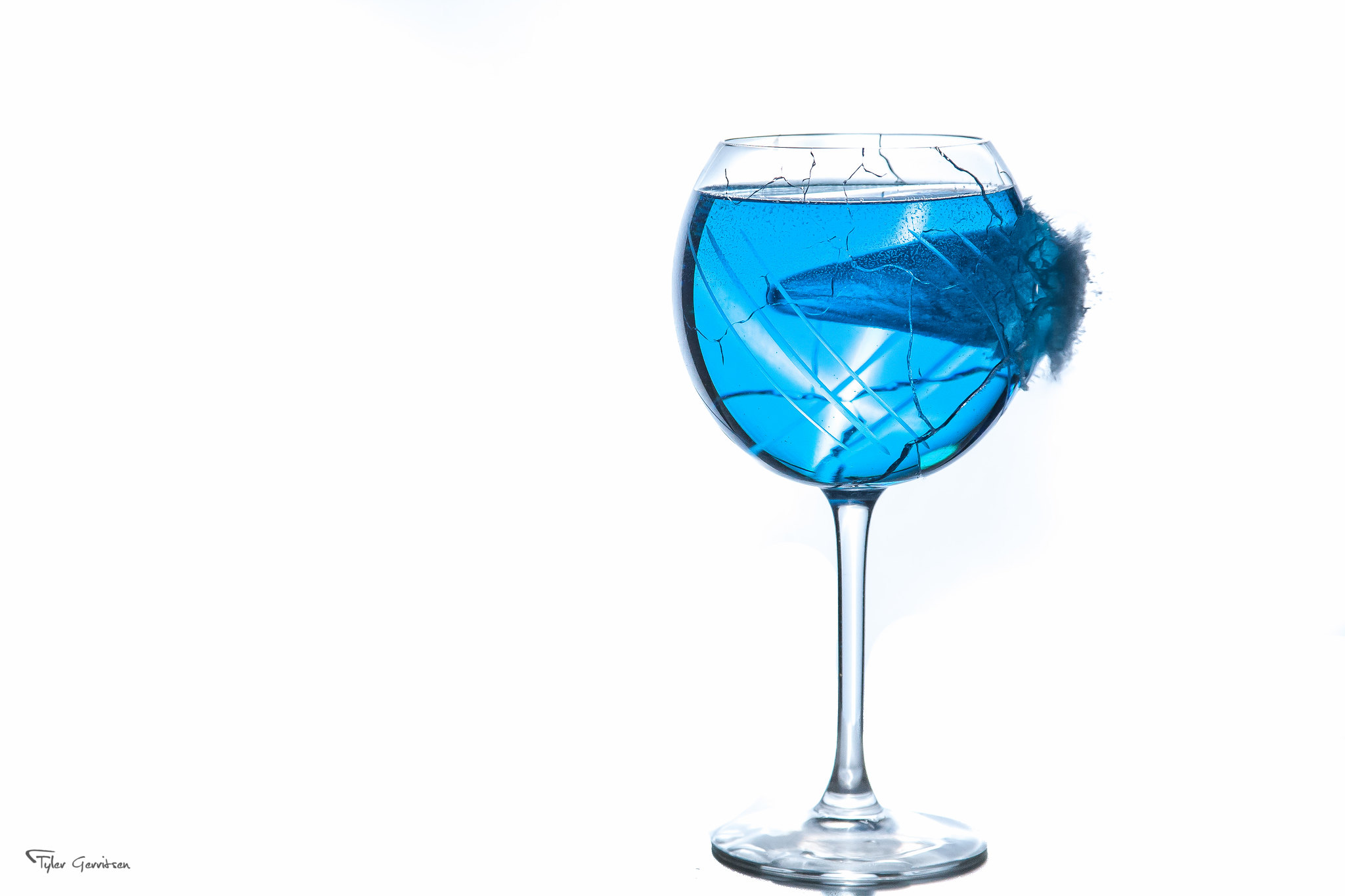
Basic Setup:
A friend loaned his air rifle, which he claimed was rated at 1,000 fps (we later confirmed this speed). I also used his Nikon SB-900 Speedlite, which provided a flash duration of 28μs (microseconds) @ 1/128 power . The lowest power setting was used as it produced the shortest flash duration, shorter than any of my flash units (430EX ii’s 67μs @ 1/64 and YN-560 ii’s 43μs @ 1/128). Of course, a shorter flash duration will freeze action better.
The photos were taken in absolute pitch black so that the camera shutter speed could be set to several seconds. The idea is that the camera’s shutter will open, but no light will reach the sensor until the flash fires. Then the camera will capture a very fast piece of action.
The flash was positioned behind the glass, with a diffuser panel between the flash and glass. Initially, the flash unit was activated by a sound trigger. I used an Arduino to detect an analog sensor input. If the input was greater than a pre-set threshold (triggered), it would wait for a set amount of time, then activate the flash. A piezo buzzer was used as the sensor. Several problems were encountered, which resulted in much time wasted in trial-and-error tests. The sensor was first placed near the muzzle of the gun to detect the bullet’s departing of the barrel. Several other sounds, including the gun’s internal mechanism, were also detected and the trigger was terribly inconsistent. So the sensor was moved to the gun’s barrel very near the trigger. The sensor could then detect the gun’s trigger mechanism. While not perfect, it worked much better than expected.

Problems:
Unfortunately there were issues with this initial setup which caused the flash to fire at the wrong time. It was impossible to choose where to place the bullet in the photo with any degree of accuracy – if the photo captured the action at all, it was considered a lucky success. The flash would often fire early or late as shown below.
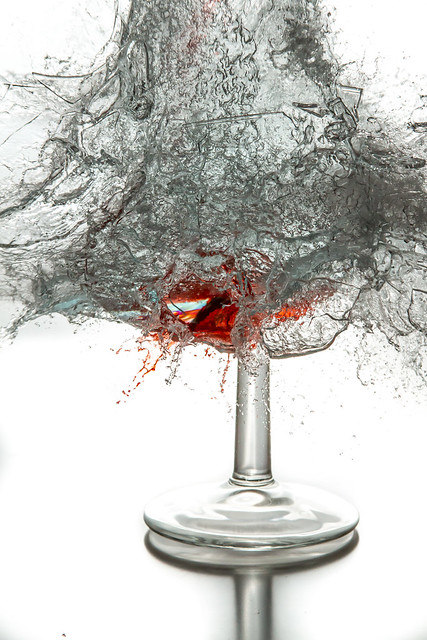
To give an idea of the timing involved, the bullet would take about 58,000 μs to exit the barrel after the internal trigger was sensed. It would then take about 1,700 μs to get from the end of the barrel to the glass (which was placed 50 cm downrange). An additional 500 μs and the bullet would have already passed through the cup. So, the total delay from the sensor trigger to the flash trigger was about 60,000 μs, and an error of a few hundred microseconds would mean we would miss the best part of the action (the bullet inside or just past the cup). Using this setup, we were only able to capture one photo of the bullet inside the cup.
Using A Ballistic Chronograph:
In order to get the desired photos, I built a ballistic chronograph to help with triggering the flash. The chronograph replaces the piezo sensor and works by measuring the time a bullet takes to travel between two optical gates. It can accurately and repeatably trigger a flash such that a bullet travelling 300 m/s within 5mm of the desired location in a photograph.
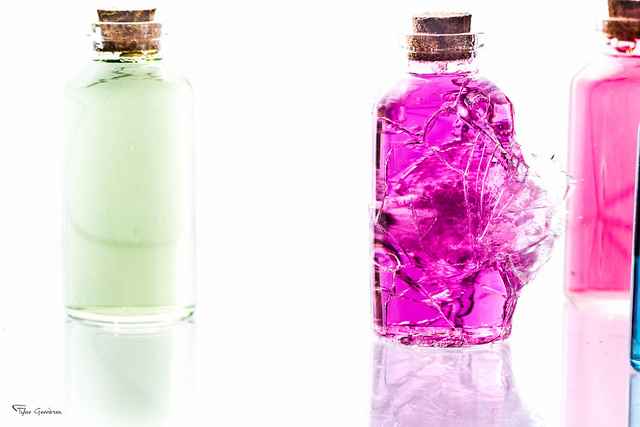

Now things have become much simpler. Set up the ballistic chronograph and tell it where the bullet is supposed to be when the flash fires, then aim the gun and shoot. Viola! So, in the interest of making things more interesting, we began to attempt to photograph the bullet after it has already passed through one cup and is travelling toward or through a second. Why is this a challenge? Because the ballistic chronograph only knows where the bullet is if its speed is constant – it needs to be travelling the same speed! But when the bullet starts moving through water, the speed decreases very quickly, and the bullet hasn’t moved as far as the chronograph expected. So, if we want a photo where the bullet has traveled perhaps 50 cm through the air, then 12 cm through a cup, another 25 cm through air, and finally 6 cm into a second cup (that’s 93 cm total), we have to tell the chronograph to trigger at something like 130 cm to account for all the lost speed.
This method required some experimentation, but the results were very cool – have a look. About two dozen glasses were destroyed to make this set of images.
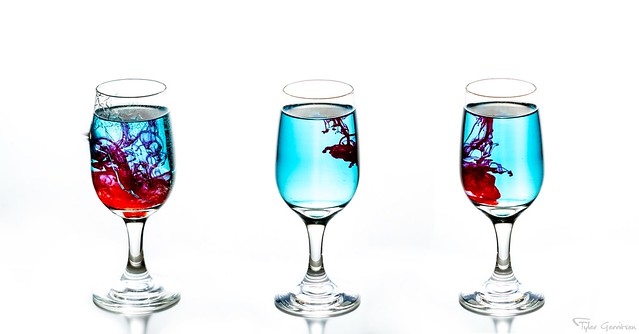
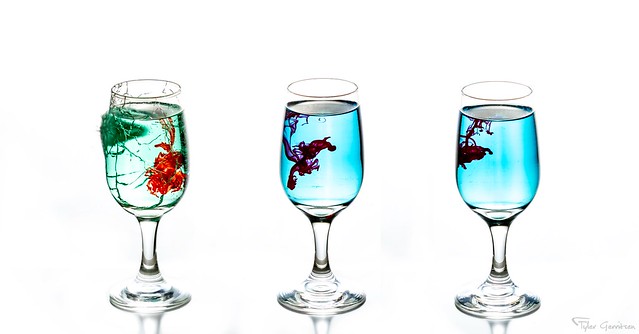
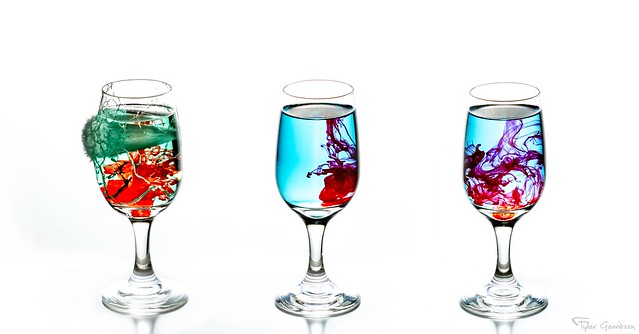
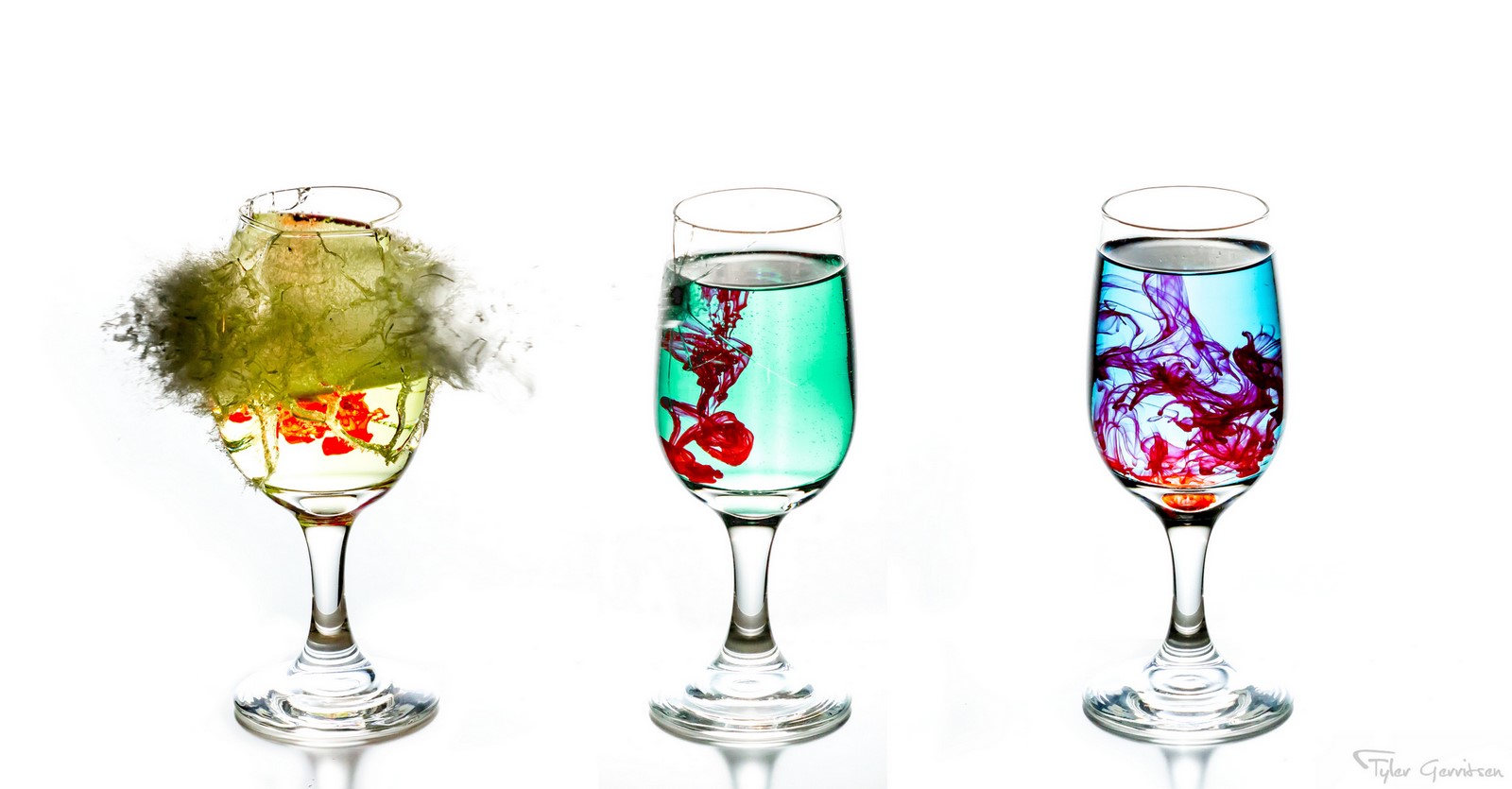
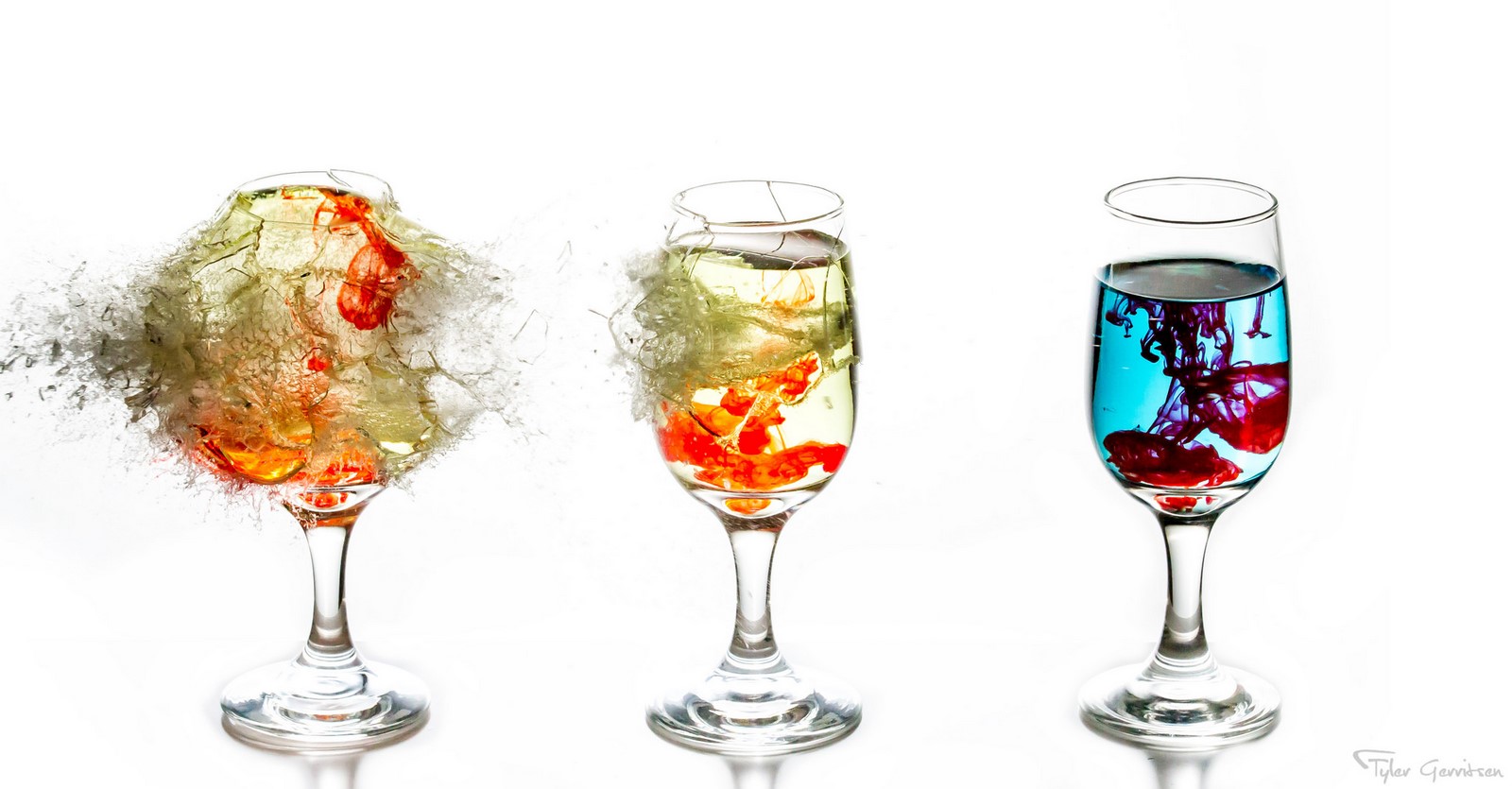


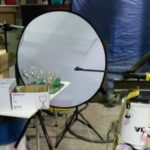
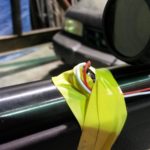
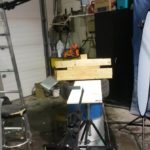
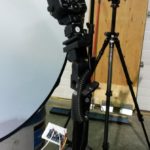
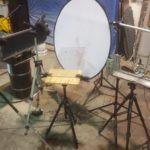
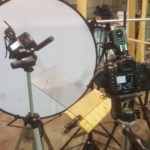
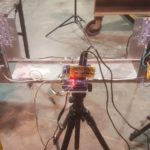
Hi, it is really beautiful, very nice mix of art and technique.. Impressive.
I got the idea with the camera, but I have some questions:
Are you taking the shots in the complete dark?
What kind of settings do you have for the ISO etc…
I suppose it is a bit like taking a pictures of the sky, except that here it is a strike of light… What about taking pictures of the Big Bang????
Thank you Jean-Paul! I appreciate it!
You’re right, it’s complete darkness. The ISO is as high as I can go, because the flashes are set to minumum power. If you increase the flash power, then the motion blur gets longer. The shutter time is several seconds (doesn’t matter cause it’s pitch black). Aperture is tricky, cause I want lots of depth of field, but theres not much light and I don’t want it too dark. So I think f/5.6 or so was typical, you’ll notice the cup is never entirely in focus but the important parts are!
I guess it is like taking sky or astro photos, lots of setup time and attention to detail!
I got the idea Tks, Never thought the delays were so small… I will once try something like that.
Tks again for the answer, it is a real pleasure look at this pictures…